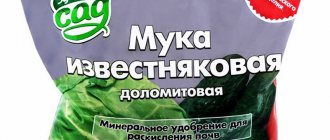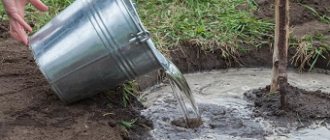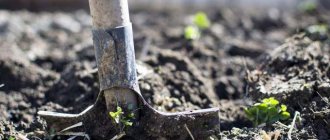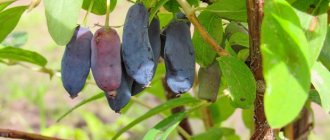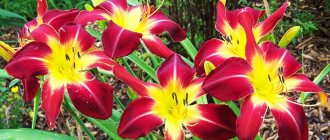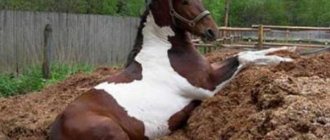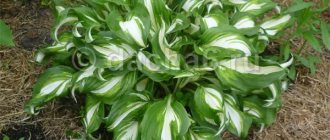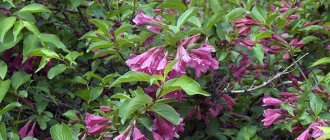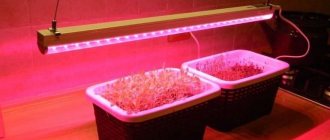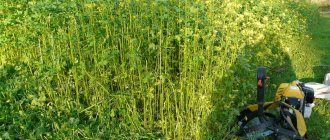For active growth and development of plants, they need to be fed. As a fertilizer, you can use not only purchased mineral fertilizers, but also organic substances.
Horse manure is one of the most popular fertilizers. However, it is quite difficult to find fresh. Not every region has a stable that is ready to sell the required amount of litter.
However, it is a useful and nutritious food that is suitable for most types of plants. By fertilizing the soil with it, you can increase its fertility and obtain a good harvest of various crops.
What is horse manure?
Usually this type of excrement is in compact piles, because due to the fairly low humidity (75–80%) it does not spread like cattle manure.
Due to the fact that horses are not only kept in pens or stables, but also periodically walked, their excrement can end up at any point on their usual route.
Manure collected in a stable or paddock can be either bedding, that is, a mixture of excrement with sawdust, straw or other chopped vegetation, or unlittered, that is, collected from a concrete or wooden floor.
The design of the stable is also of great importance. If it is equipped with a urine drainage system, that is, separation into solid and liquid fractions occurs immediately, then the humidity of the excrement is 70–75%.
If there is no such system, then the solid and liquid fractions are removed during daily cleaning, but in this case it is necessary to use bedding that absorbs animal urine.
Sawdust and coniferous shavings are
very , because they not only absorb urine, but also:
- perform the function of an antiseptic, suppressing the activity of bacteria that cause various diseases;
- Due to the high concentration of aromatic resinous substances, they muffle the unpleasant odor characteristic of manure.
In open areas, excrement cannot always be detected immediately, so some of it has time to dry out and turn into dry manure. There is also partially dried material - not yet dry, but in which the activity of bacteria has almost completely stopped and their population has begun to decline.
What types of organics are there?
It is customary to fertilize soils in vegetable gardens and garden plots with manure of the following varieties:
- the most popular is mullein, a waste product of cattle. It is watery in consistency and decomposes as temperatures rise to +15-25°C. Due to high humidity and heavy structure, it decomposes more slowly. To speed up the process and increase the decomposition temperature, add 1 part of sawdust to 3 parts of cattle manure;
Waste product of cattle
- equine - a waste product of horses, a nutrient substrate of dense consistency that retains nitrogen well. Its porous structure promotes active decomposition, which is accompanied by an increase in temperature to +50-70°C. Top dressing is ideal for enriching poor heavy soils; it is useful to use for fertilizing the substrate of greenhouses, hotbeds, greenhouses;
- rabbit, similar in properties and physical and chemical characteristics to horse;
- sheep or lamb, less popular because it has a poorer chemical composition. The decomposition of organic matter occurs with a sharp increase in temperature; it is useful to add it to lighten heavy clay soils and loams;
- pork, the composition of which is significantly different from all previous ones. It contains a large percentage of weed seeds; in addition, the pigs’ diet contains not only plant, but also animal food. Pig manure takes longer to decompose, releasing little heat; any soil is enriched with it, usually mixed with horse humus and mullein.
How to improve productivity?
We are constantly receiving letters in which amateur gardeners are worried that due to the cold summer this year there will be a poor harvest of potatoes, tomatoes, cucumbers, and other vegetables. Last year we published TIPS on this matter. But unfortunately, many did not listen, but some still applied. Here is a report from our reader, we would like to recommend biostimulants for plant growth that will help increase the yield by up to 50-70%.
We advise you to prepare in advance for the summer season, pay attention to this biological product. There are a lot of positive responses.
Composition and properties
Despite the fact that the main component of horse manure is water, it also contains many other substances in various proportions - per 1 kg of fresh excrement there is an average of:
- 230 g of organic matter, which contains not only partially digested cellulose or lignin, but also intestinal enzymes, as well as various acids;
- 6 g of nitrogen in the form of various compounds;
- 5 g potassium oxide (K2O);
- 4 g calcium oxide (CaO);
- 3 g phosphorus oxide (P2O5).
Many elements of the periodic table are present in less significant quantities (from tenths to thousandths of a gram).
All this makes fresh manure a very aggressive substance that can kill any soil, but after rotting it turns it into one of the best complex fertilizers, which introduces not only humic acids (humus) into the soil, but also many essential microelements.
When not to use horse droppings
Despite all the beneficial properties of this organic fertilizer, in some cases you should avoid using it:
- if there is a coating on the surface of the manure, it loses the ability to heat up during decomposition. It is a fungus that has this effect. Thus, it will not be possible to use manure with coating to create warm beds and biofuel in greenhouses
- If the droppings have not yet decomposed, then you cannot use it to make a bed for cucumbers. Instead of heating from below, the cucumbers will receive ammonia fumes, which have a detrimental effect on their development.
- Despite the fact that it is often recommended to be used to fertilize potatoes, in some cases it can harm the crop. The fact is that horse droppings can carry scab, which is transmitted to potatoes. Sometimes it’s better not to take risks and fertilize potatoes in other ways
- dense soil in a greenhouse is another “contraindication” for its use. In such soil, the decomposition of droppings occurs slowly, and in a closed greenhouse this is fraught with the accumulation of hydrogen sulfide, which in high concentrations can poison the roots of any plants
Thus, you need to use fertilizer carefully, following the rules for its use. In this case, the benefit from it will be maximum.
Can it be used as a top dressing?
To answer this question, it is necessary to understand how the soil changes during the development and fruiting of plants, and then find out how fresh and rotted horse manure affects the soil.
Any soil consists of humus, clay and sand.
The basis of humus is humic acids , which are the only substance that is a building material for plant cells.
Mono- and polysaccharides contained in humus provide the plant with energy, and from humic acids, the germinating seed or developing sprout forms new cells, due to which the plant develops.
Clay acts as a binding material, giving the soil the necessary strength, and sand is a conductor and reservoir of water. Plants primarily extract humic acids and various saccharides from the soil; the less of them remains in the soil, the less fertile it will be .
Fresh horse manure does not contain humic acids, so it has no particular benefit to the soil until it rots. But even fresh excrement is used as fertilizing, diluting it tens or hundreds of times with water, because this makes it possible to safely supply plants with microelements.
But such fertilizing in the spring is less effective than using full-fledged humus, because in addition to microelements, the soil needs the renewal of humic acids and various organic polymers, which are necessary for any plants to develop.
But after rotting, horse manure has many beneficial properties, turning into a source of such acids. In addition, part of the vegetation that served as food for horses, after passing through their gastrointestinal tract, retains its shape and structure, due to which it can loosen the soil, performing the same function as sand.
However, litter excrement is more effective for improving soil structure , and the larger and thicker the litter material, the higher the effectiveness of such fertilizer.
Storage methods
In order for nutrients to be better preserved, you need to properly store horse humus, granulated manure and fresh litter. Nitrogen is the main active ingredient in litter, so it must be preserved. To do this, the droppings are mixed with peat or straw, less often with sawdust. The liquid that drains as fresh manure decomposes will be absorbed into and retained by the dry plant components.
Store-bought granular mixtures are stored closed. If the granules are coated, then increased humidity can speed up its dissolution. Therefore, the bag of horse manure pellets is closed and placed in a cool, dry room.
Hot
Not a very effective method, since horse manure quickly decomposes and loses a lot of nitrogen.
Installation method:
- stack horse manure without compaction in piles no more than 50 cm high;
- when the temperature starts to rise, add the next 50 cm layer, and so on.
You can cover the top with a layer of straw or peat so that the released carbon dioxide is absorbed and evaporates less.
Video: Mulching plantings in the garden with horse manure
Cold
The most productive option. How to organize a pile for cold storage of horse manure:
- Make a pile of boards: height 1.5 m, length - no matter how much, width - no more than 2 meters. This is important because it is necessary to control the access of oxygen. If more air flows into the horse manure due to its small width or height, then the method will turn into a hot method. The fertilizer will lose its potency.
- Place a layer of peat or straw on the bottom. If not, use sawdust, but preferably one that has been sitting for a year or two. This will be drainage. Some people lay a layer of oilcloth, and then drainage substances.
- A layer of horse manure 20 cm high is laid out. On it is the same layer of soil or peat. Everything is carefully compacted. There should be a minimum amount of air. So the layers are stacked to a height of 1.5 m. On top is the last layer of earth.
- At the end, it is necessary to build a canopy to prevent rain from getting into the pile.
With this method, the activity of soil microorganisms will be suspended, and the temperature inside will remain at 30 degrees. The collar should not have wide gaps - the boards are nailed tightly.
Liquid
In this form, storage of horse manure should be carried out in a closed form. How to cook:
- The storage container is filled 1/3 with horse manure.
- Filled with water to the brim.
- When it dissolves a little, mix well and cover tightly with a lid.
It is believed that the use of horse manure as a fertilizer in liquid form is possible only after its fermentation. It is not right. During the fermentation process, an important component, nitrogen, is released and evaporated. Therefore, the fermentation process must occur in the soil. You can avoid fermentation by simply tightly closing the lid on the slurry. In the spring, it is diluted with water again and the beds are watered.
How not to store
It is advisable to immediately place fresh horse manure in a pile for cold storage or compost it to avoid loss of nutrients. If the droppings are left in the open air - without bedding and shelter from above, then rain and sun will destroy most of the useful components.
Humus cannot be left in the air - it dries out and decreases in volume.
The benefits and harms of horse manure will depend on the storage method. There is a danger that flies will lay eggs in openly lying material, so it will be infested with larvae. Making compost without active ammonia will be more difficult because the temperature will not rise to kill bacteria, larvae and other parasites.
What plants is it suitable for?
Horse manure can be used to fertilize any crops that grow naturally in fields or forests, because their metabolism is based on feeding on humic acids, into which this material turns after rotting.
Therefore, they can be fertilized:
- any garden or vegetable plants;
- garden trees;
- plants in pots that naturally grow on humus soils, that is, where the soil is renewed by rotting dead animals or plants.
But they shouldn’t fertilize and feed crops growing in sandy deserts, because they have a completely different metabolism, they use different nutrients, and manure can only harm them.
Degree of decomposition of manure
It is used in various consistencies. Fertilizer has its own special classification, which is determined by the degree of decomposition and its duration.
- Fresh fertilizer is added to the soil in the autumn, when digging is necessary. This is done to ensure that the manure is rotted on time. It is not recommended to add it to crops in the soil, as this may affect the appearance and taste of the plants. The fertilizer may contain fungal spores, crop seeds, and worm larvae. Since rapid organic processes occur in manure, plants can die from such exposure.
- Dung , which is ½ rotted, is used to fertilize the ground while digging up the site or, alternatively, it is mixed with water to obtain a fertilizer material.
- If fresh manure is not available, then rotted horse excrement is more often used. After it is laid, its mass is reduced by half and the fertilizer dries out. It is used in a ratio of 1:10 - where 1 is square meters, and 10 is kg of manure used.
- Humus has the most beneficial qualities which is very difficult to obtain. This is a labor-intensive process that takes more than one year, but the effectiveness of such fertilizer material is at a high level. In stores you can buy first-fresh litter, but in order to maximize its positive properties, it is placed in a dark place for a while so that the fertilizer can infuse and be able to absorb the most useful compounds.
Which is better?
This question usually refers to the physical state of the manure, that is:
- liquid - collected using the flush method;
- fresh, including litter, normal humidity;
- partially rotted, including litter;
- humus, including litter;
- dry, including granulated.
The answer to this question is directly related to the purpose for which they are going to use horse manure and where to use it. If we are talking about fertilizer, then rotted material is best, because it is a universal product that simultaneously performs several functions.
If it is going to be used to heat the soil in greenhouses or greenhouses, then fresh bedding material is better suited, because it not only burns longer than clean material and releases a lot of heat, but after rotting it also turns into high-quality humus that can loosen the soil.
If it needs to be transported over a long distance, then dry material is best, because it has minimal volume and weight. We have prepared a table that includes the most popular methods of application, as well as the corresponding type of horse manure:
| Application | State |
| Mulching all year round | Rotten |
| Mulching before leaving fallow | Partially or completely rotted |
| Production of liquid fertilizer | Dry, including granular, liquid, fresh or partially rotted |
| Fuel production | Fresh litter |
| Storage for next year | Dry, including granulated |
| Processing into alcohol | Liquid, fresh or dry |
| Biogas production | Liquid or fresh |
Applications of swine manure
Pig manure is used less often than cow and horse manure to fertilize crops. To maximize the benefits of manure, it is important to know when is the best time to apply manure.
The period of soil fertilization depends on the degree of decomposition of pig droppings:
- Fresh manure (storage period no more than 3 months) is not used to nourish the soil. It contains too many aggressive components that can destroy agricultural crops. The only time when it is possible to add fresh pig droppings to the soil is in the autumn season, and in that case, if the animal’s feces are mixed with horse manure.
- Semi-rotted (shelf life is from 3 months to six months) droppings can be applied to the soil at the end of autumn, always after collecting the entire harvest and plant residues in the ridges. The consumption rate of semi-rotted manure is per sq. m of plot, up to 3 kg of organic matter is used.
- Rotted manure (storage life from six months to a year) is also applied only in late autumn when the area is plowed. Consumption rates - per sq. m. of soil is used up to 7 kg of organic matter.
- Humus can be used at any time of the year. Manure is applied directly to the soil while plowing the site.
It is prohibited to exceed the recommended ratios of organic fertilizer, as this may be hazardous to the health of crops.
In terms of its beneficial qualities, humus from pigs is compared to the droppings of cows or horses. To improve crop yields, it is recommended to mix pig manure with other types of farm animal litter.
If you add humus in the fall, then next year in the spring it is good to plant carrots, cabbage, zucchini, pumpkin, and onions in the garden bed. Fresh and half-rotted manure is used to fertilize the beds on which it is planned to grow potatoes, eggplants, blackberries, peppers and some flowers (dahlias, mallow, cloves). It is good to place rotted manure on beds where tomatoes, garlic, corn, and beets will grow and bear fruit.
How to use horse manure in the garden?
The options for using this material depend on two factors :
- his physical condition;
- goals to be achieved.
Therefore, we will talk about how to transfer it from one state to another, and about its correct application, which allows you to achieve your goals.
Production of liquid fertilizer
There are several options for preparing this fertilizer, which differ in the state of the original product, that is, horse manure. Fertilizer from fresh material has a minimal concentration, because it is diluted hundreds of times with water .
If you make the mixture stronger, then instead of benefiting the garden, it will do a lot of harm, because in such a concentration, intestinal enzymes and other substances have a detrimental effect on plants and soil.
Feeding from semi-rotted material is made less concentrated, that is, one share of raw material accounts for 30–70 parts of water. To make fertilizer from humus, a ratio of 1:10 is used, that is, for one share of raw material there are 10 shares of water.
Preparation of rotted material
To rot, excrement is taken to a pre-prepared site (gnosche) or stored in special structures located at a sufficient distance from both the stable and other buildings.
At the sites, they are dumped into piles and covered with waterproof fabric or polymer film, leaving space underneath for free movement of air and escape of gases.
To speed up decay, the pile is treated with bacterial preparations, and also turned by hand or with tractor turners. The time for complete decay depends on many factors and ranges from 3–18 months.
Drying and granulating
If it is necessary to store horse manure for the future or transport it to another city/region, then it is dried or granulated.
For drying without special equipment, they use the methods that we described in the Kizyak article, that is, they form cakes and either lay them on the ground or sculpt them on a barn wall intended for this purpose .
As soon as the dung has dried a little, they are placed in conical hollow piles, leaving space between the cakes for air movement. Drying by granulation is described in detail in articles about separators and granulators.
Mulching
Mulching with manure is used to solve many problems, such as:
- reduction of water evaporation;
- protection from frost or heat;
- weed control;
- restoration of soil fertility;
- improvement of soil structure.
The only advantage of horse excrement is that it produces the most balanced mulch , so it will be the most versatile.
However, properly prepared mulch from any other excrement will be better suited for solving the tasks for which it was made than universal fully or partially rotted horse manure.
Heating soil in greenhouses
Horse manure is considered one of the best materials for heating the soil in greenhouses or greenhouses, because it “burns” for a long time, releasing more heat than the excrement of other animals or birds.
It should be noted here that the most effective material for these purposes will be the material on the litter .
The procedure for heating with horse excrement is exactly the same as that described in the article on greenhouses, and dried excrement of not only horses, but also any other animals or birds can be used as insulation.
Useful composition
Organic horse manure fertilizer is rich in nutrients. It contains:
- zinc,
- nitrogen,
- phosphoric acid,
- potassium,
- magnesium,
- manganese,
- boron and many others.
By using it as a top dressing, you can increase the amount of carbon dioxide and nutrients in the soil, and the microorganisms needed by plants will be activated in it.
If you use it at your dacha in the form of fertilizing and fertilizers, you improve the composition of the soil in the garden, normalize air exchange and improve water balance. Soil saturated with clay will become looser and softer. And in sandy soil, manure will not allow useful substances and moisture to be washed out.
One of the advantages of fertilizer is that the soil, filled with it, retains high fertility for not one year, but five to six years. But since it contains little nitrogen, the result in the first year after application (if you fertilized in the spring) will not be very noticeable.
You will see particularly good results in subsequent years. The benefits of using this supplement will be more noticeable and will increase significantly.
Feeding plants with a liquid solution
Fertilizing restores in the soil the nutrients and microelements consumed by plants for their development. Many diseases of cultivated crops are associated with a lack of various substances, and proper fertilizing improves their condition and helps cope with the disease.
All fertilizers can be divided into 3 types :
- general;
- root;
- foliar.
During general fertilizing, fertilizer is poured throughout the garden or vegetable garden, so it has a beneficial effect on all plants.
Root feeding is used to fertilize individual plants, so the solution is carefully poured under the root, trying not to touch the leaves.
This allows you to more accurately regulate the impact on the soil, because not all plants on the site need additional nutrition, and for some plants, especially during the period of fruit ripening, this can even be harmful.
Foliar feeding is sprayed over the surface of the foliage, so that nutrients are supplied not through the root system, but through the leaves.
General
General fertilizing is best done in late autumn (after harvest and leaves fall) or early spring (before sap flow begins). Moreover, in the fall you can use a composition based on partially rotted excrement, adding 30–40 parts of water to one part of the material .
For spring feeding, the amount of water needs to be increased by 1.5–2 times. If fertilizing is done from humus, then the optimal ratio between fertilizer and water is 5–15 and depends only on the comfort of work.
After all, a steep solution is similar to a medium liquid semolina and not everyone is comfortable working with it, but at a minimum concentration the mixture turns out to be more fluid, almost liquid, so many people find it convenient to work with it.
Root
Root feeding from completely or partially rotted excrement is applied either in early spring before the start of sap flow, or 1–2 weeks before the ovaries appear.
to add it later, because this will lead to an increase in the amount of nitrates in the fruits .
After harvesting and the leaves have fallen, you can apply any fertilizer, including fresh material, maintaining the correct ratio of fertilizer and water.
Often, root feeding is combined with pre-winter watering; in this case, fertilizer can be applied both during watering, before or after it.
Foliar
Foliar feeding is applied during the period from the appearance of fruit buds to the beginning of fruit ripening. Due to its minimal concentration, it does not lead to an increase in nitrate content , but accelerates the growth of green mass, which has a beneficial effect on all processes occurring in the plant.
However, even it should not be used after the fruits begin to ripen, because this will lead to a change in their chemical composition.
And after harvesting, the plant begins to prepare for winter, so treating the leaves with fertilizer can no longer help it.
How to properly soak feeding material?
To prepare the infusion, you will need a plastic or metal container, the volume of which is 1.5–2 times larger than the required volume of the finished solution.
To properly dilute, use the following dosage - add 3-5 parts of water to one part of excrement , since it is necessary to make the fertilizer more liquid, suitable for further dilution with water and subsequent effective use.
Manure is placed in the container and water is poured in, and the order of actions does not matter, then all the contents are thoroughly mixed with a strong stick or shovel.
Despite the fact that a couple of hours are enough for the manure to liquefy, it is advisable to leave the mixture for a week so that the bacteria process it at least a little and make it less toxic. This should be done even when soaking humus, because after such exposure the mixture has a more beneficial effect on the soil and plants.
How to dilute the mixture?
To convert soaked manure into a usable liquid fertilizer, the semi-liquid mixture is poured into the required amount of water or diluted with the required amount of water. There is no difference between adding fertilizer to water and adding water to the solution container.
Then the contents of the container are mixed until smooth, and the liquid fertilizer becomes ready for use.
If water is delivered in buckets or barrels for pre-winter irrigation, then the ready-made fertilizer for general application can be evenly distributed between all containers.
Methods of application
, standard equipment is used to apply the mixture , which any gardener or gardener has, that is:
- buckets;
- watering cans;
- sprayers.
Watering cans are best suited for general fertilizing, because they allow you to evenly distribute the solution over a large area.
For root feeding with liquid fertilizer based on horse manure, use buckets or watering cans with the sprayer removed.
All this allows you to apply the finished composition to the plants, without paying attention to small lumps.
However, the foliar method requires a sprayer that can only work with clean liquids, so the fertilizer must be filtered before pouring.
Using horse manure in the garden
Horse manure is a universal fertilizer: suitable for annuals, perennials, vegetable gardens, gardens, flower gardens, for open ground and indoors.
Fertilizer recipes
I’ll tell you about popular recipes for preparing effective folk fertilizers from horse manure.
The most famous is “horse mash” with the addition of nettles:
- I mow and chop fresh nettles, pour the raw material into a barrel, and fill it with water.
- I infuse the nettle mixture for about 3 days.
- I add horse droppings to this “compote” in a ratio of 1:10.
- Mix thoroughly, seal with a lid, and leave to infuse for 2 days.
- I stir and filter the mass.
- I use it for evening root or foliar fertilizer, after diluting the concentrate with water.
The second recipe requires slurry. It is collected independently when storing fresh manure on your site. The recipe is simple: dilute the slurry with water 1:6, use it for root watering of plants. This way you will receive an excellent nitrogen-potassium fertilizer, which is necessary for plantings in the first stages of development.
There is also a “secret remedy”: place a barrel of water in a cucumber greenhouse, pour a little horse manure into it, stir the mixture to the consistency of sour cream. Stir every day - fermentation will start with the release of carbon dioxide. This has a beneficial effect on cucumbers: they develop quickly.
Application as biofuel
Do not forget that during active decomposition, fresh horse manure heats up to 80 ° C. This feature allows it to be used as a kind of biofuel for arranging warm beds.
In this role, I use horse manure in two cases:
- I build a high bed in a greenhouse or hothouse for those plantings that I plant in early spring. To create comfortable conditions, it is necessary to pour a lower layer of manure at least 30 cm high.
- I am building a warm bed in open conditions. This measure is good for heat-loving crops - cucumbers, tomatoes, zucchini, etc. I also build the bottom layer from manure, and the top layer from garden fertile soil. To prevent the bed from falling apart, I limit its contour with boards. This measure allows you to get not only an early, but also a rich, tasty harvest.
Using fresh
I use fresh horse manure to fertilize early crops. However, I apply this bio-fertilizing only in the fall - for digging. I start fertilizing as early as possible, almost immediately after harvesting:
- I carefully remove garbage and plant debris.
- For every square meter of land - a bucket of horse manure.
- I dig up the soil on the bayonet of a shovel, mixing fresh manure with garden substrate.
- After digging, I cover the fertilized area with film - this measure prevents the volatilization of nitrogen and other useful substances.
In the spring, the prepared ridge is ready for planting: all that remains is to add mineral compounds and ash. Fresh nitrogen will already have time to decompose - the fertilizer will not burn the young root system.
Liquid
In garden centers, I have often come across liquid horse manure: the diluted concentrate was poured into 5-liter containers. This packaging is very convenient for both transportation and use.
It is possible to use liquid manure in the same way as dry manure. Its main advantage is a softer effect.
Application of granular
Instructions for using granular fertilizer are on the product packaging. Let me present the standard algorithm:
- Fill the granules with water in the proportion indicated in the instructions: as a result, the mass dissolves to the concentration of the suspension.
- Infuse the mixture for 4 hours. To avoid the formation of phosphate residue at the bottom, stir the liquid from time to time.
Use the resulting fertilizer for both root and foliar feeding.
horse manure pellets
Mulching with horse manure
And another useful use of horse manure is as mulch. Let me explain why this choice is good:
- Enrichment of depleted, depleted soil with useful substances: with each watering, water passes through the mulch, and nutrients from it enter the soil.
- Protection against moisture evaporation, drying out of the top layer of earth, and the formation of an earthen crust.
- An effective weed control if you spread the coating in a thick layer.
- Restoring the fertility of the substrate.
- Effective protection against hypothermia and overheating of the upper layer of soil.
Let me draw your attention to the fact that only rotted manure is suitable for mulching: dry, humus. I do not use it in its pure form - I mix it with hay, sawdust, straw. This coating is universal - suitable for flowers, garden crops, perennial shrubs and trees.
How to use manure in spring and autumn?
The main goals of spring and autumn application of horse manure are to restore soil structure and replenish nutrients lost by plants.
Only humus is suitable for application/application in the spring, because partially rotted material, and even more so fresh manure, contain too many substances toxic to the soil and plants that decompose during the process of decay.
For autumn application to fields sown with winter crops, only humus is suitable , however, if the field was not planted in winter, then partially rotted material can also be used. If the field is left fallow, then even fresh manure can be applied to it.
Humus is brought to the field and scattered over it manually or using special attachments in an even layer 2–10 cm thick, and where winter crops have already been planted, the layer thickness should be minimal.
If the soil is severely depleted, then humus is first added, then the field is plowed and disked, after which winter crops are planted. Partially rotted manure is spread throughout the field either manually or mechanized , then immediately plowed or dug up.
Fresh manure is distributed over the site in any convenient way, always taking into account its chemical aggressiveness so as not to damage the attachments, then plowed or dug up and left fallow.
Sometimes fresh manure is laid out around the plants, at a distance of 10–20 cm from the trunk, but only material with minimal moisture is suitable , that is, lying on the ground for at least a few days (or better yet, weeks), into which the excess moisture goes.
Such fertilizer really accelerates the growth of green mass, but if you fertilize the plant in this way after the flowers have set, the fruits will be filled with nitrogenous compounds, including nitrates.
Eating them can be very harmful to your health. However, for roses and many other flowers, fresh manure is a very good fertilizer, but even it cannot fully replace humus.
Methods of application
Manure is most beneficial for heavy soils. On dry and loose soils, to achieve a noticeable effect, you will need to apply it for several years in a row. Fresh manure mineralizes slowly, so it should be used together with mineral fertilizers. Humus does not have this drawback, so additional fertilizers are not needed. Substrate of any freshness can be applied before winter; even fresh ones will have time to mineralize before the sowing season. The average application rate is 5 kg per 1 m2. It is useful to know that a regular bucket holds approximately 7.5 kg of manure. This will help you measure out the right amount without having a scale.
This natural fertilizer has a pronounced cumulative effect; its benefits reach their maximum in the second or third year of continuous use.
It is best to apply manure when the beds are completely dug up, which usually occurs in spring and autumn. Approximately one bucket is taken per hundred square meters. Fresh is added in the fall, half-rotted and humus is added in the fall.
It is better to apply manure while digging the beds
Manure is also used for soil mixture for seedlings, especially tomatoes. To do this, take 2 parts of garden soil and 1 part of humus or half-rotted manure.
Soil mixture
The most striking cases of failure when using this type of fertilizer are associated with the application of fresh excrement directly under the roots of plants during the growing season. There is no need to do this. The product, which has not yet begun to decompose, contains too much nitrogen and generates too much heat. All of the above can seriously damage the root system.
You can add humus under the roots
As biofuel for greenhouses and greenhouses
When decomposing, fresh horse apples release a lot of energy; local temperature increases can reach 33 degrees. At the same time, the soil is being enriched with valuable substances. In particular, carbon dioxide, which is released in particularly large quantities, serves as the main source of plant nutrition. It is especially useful for cucumber sprouts; adding fresh manure to the greenhouse in which you plan to plant cucumbers increases productivity. Therefore, young litter is perfect for “heating” greenhouses. It can be applied either in spring or autumn.
| Season | Peculiarities |
| Spring application | A hole 60 cm deep is dug across the entire area of the greenhouse or greenhouse. Then disinfection is carried out, for which the bottom of the hole is watered with a very weak solution of potassium permanganate. Then fill the hole with a mixture of ash (optional) and droppings in a layer of 30 cm, fill it to the edges with ordinary soil, level it and cover it with polyethylene for two days. After this, they begin planting seeds or seedlings. |
| Autumn application | It differs from the spring one in that the layer of manure doubles in thickness. |
Greenhouse on a dung bed
For flowers
Species belonging to the rose family (the most popular in Russian gardens are roses and ornamental rose hips) always respond positively to watering with diluted manure infusion. It is also useful to scatter a small amount of half-rotted manure between the bushes, or use it for mulching. It is also useful to water other flowers with liquid, especially during the flowering period.
You can water the plants with manure infusion from a watering can
For cabbage
White cabbage is fed with this fertilizer twice a season, the last time at least two months before the heads of cabbage are harvested. Otherwise, some of the nitrogen may accumulate in them in the form of nitrates. Fertilizing is done with manure infusion, with a glass of ash added to a bucket. Water with this mixture mainly in the evening, at the rate of one glass per bush.
This is how liquid fertilizer is prepared
The colored ones are also watered twice, but according to a slightly different pattern. The first watering is carried out two months after planting the seedlings in the ground. Dissolve a tablespoon of urea and 2 cups of manure infusion in a bucket of water. Pour 2 cups of this mixture under one plant.
The second time feeding with the same mixture is done when the head of cabbage reaches the size of a walnut. A liter is poured under the bush.
For cucumbers
This crop is also watered with a mixture based on manure infusion. Processing is best done in the evening.
The first fertilizing is applied when the plants begin to bloom. For a bucket of water, take a glass of infusion, a teaspoon of urea, superphosphate and potassium sulfate. Add a glass of the resulting liquid under the plant. The second time watering is done after 2-3 weeks, the third time after the same period of time. The composition is the same.
Watering a manure bed with cucumbers
Cucumbers are also grown in “dung” beds. In addition to fertilizing, this method provides this heat-loving crop with a comfortable temperature for it, since manure, decomposing, heats the soil.
Semi-rotted manure is mixed half and half with straw. The bed is thickly covered with this mixture (the second option is to pour it into wide transverse trenches) and left alone until a light smoke appears above it, indicating that isothermal processes have started. this means that “the process has begun” and the fertilizer can be used for its intended purpose. This takes about a week. After this, the bed is trampled down, watered with water, covered with polyethylene and left alone for two days, after which it is opened and covered with a layer of soil.
Smoke over the garden bed
For carrots
If the planted carrots grow poorly and slowly, they are fed with manure infusion. The first time this is done is when the bulk of the plants in the garden have already produced their fourth leaf, the last one 2-3 weeks before harvest.
Fertilize carrot beds with manure
For potatoes
When planting potatoes, place a handful of manure mixed with soil in a 1:1 ratio into the hole. In addition to increasing the yield, this mixture repels wireworms.
Planting potatoes
For apple trees
Annual feeding of apple trees with horse manure will help make the tree healthier and increase productivity. This is always done in the fall after harvesting the fruits, once a year. A shallow trench is dug around the tree so that it encircles it in a ring at a distance of half a meter from the trunk. The trench is filled with fresh manure or manure infusion, allowed to stand and covered with earth.
Apple tree mulching
Video - Adding humus to the soil
How to use in a greenhouse?
In addition to heating the soil, which we talked about above, horse excrement is used in greenhouses for:
- restoration of soil structure;
- restoration of lost nutrients and microelements;
- accelerating the development of plants and increasing their productivity.
To restore the structure , humus from litter excrement is best , because it combines the qualities of a universal fertilizer and effective loosening of the soil.
Due to the absence of toxins in humus, which are characteristic of fresh manure, the application of such fertilizer does not reduce soil fertility and does not harm the plant. Also, litter humus effectively restores nutrients spent on plant development.
However, the most effective use of manure will be when applied after the removal of old plants, that is, in late autumn, before the start of winter.
You can restore lost nutrients and microelements at any time of the year , as long as the greenhouse is actively functioning.
To do this, you can either add humus to the beds or apply liquid fertilizers based on horse manure.
All fertilizers are used in exactly the same way as described in the previous sections, because their effect on the soil and plants is the same.
The same measures are used in the country and in cases where it is necessary to accelerate the development of plants and increase their fertility without the use of mineral and chemical fertilizers.
Types of natural fertilizer and stages of organic decomposition
Depending on the stage of decomposition, organic matter can be of the following types:
How is it better than the excrement of other animals or birds?
Horse manure is noticeably superior to any other excrement in terms of the amount of substances suitable for conversion into humus or plant nutrition.
Both fresh and after rotting, its chemical composition is the most balanced to be used as a fertilizer in fields, orchards and vegetable gardens.
This is due to the following factors:
- nutritional characteristics;
- special structure of the intestine (the length of the horse intestine is almost 2 times less than that of the cow);
- regular physical activity, because horses are rarely bred for meat or milk.
Therefore, any fertilizers made from it will be more effective than from the manure/droppings of any other animals or birds.
What are the benefits of organic fertilizer for soil?
- If you enrich the soil with manure, its physical and chemical characteristics improve. The decomposition of organic matter saturates the soil with carbon dioxide, which plants need for photosynthesis.
- The fertilizer eliminates physical acidity, which occurs when mineral fertilizers interact directly with garden plants.
- Manure prevents the absorption of toxins and does not allow crops to absorb herbicides, radionuclides, and poisons that are part of the soil.
- Organic fertilizing makes the soil looser, more permeable to air and water, which is especially valuable for heavy, clay soils. Sandstones and sandstones, on the contrary, acquire viscosity from it and easily retain moisture and nutritional components.
- In the process of processing organic matter by microorganisms, the temperature of the soil increases and the concentration of humus increases.
Organic fertilizer and its chemical composition depend on a number of factors: the type of animal, its daily feeding ration, the composition and quality of food.
Mullein: harm or benefit?
Cons and possible harm
When used correctly, this material never harms the soil or plants, but improper use can cause serious damage to the soil and destroy plantings.
After all, many substances found in fresh excrement are not only incompatible with plant metabolism, but are also poisonous to them.
Therefore, an incorrect attempt to fertilize the garden with fresh or even partially rotted manure leads to dire consequences. However, this is typical for the excrement of any animal or bird, because they all contain substances that pose a threat to plants.
Liquid consistency
In liquid form, horse feces are most often found in concentrated and diluted forms. In factories, manure is packaged in 5-liter containers. They are convenient to move and use in private households.
The use of liquid and raw fertilizer is no different in quality, but there is one feature - liquid manure has a more watery consistency, it has a more delicate effect on the soil.
Liquid manure is also made with your own hands in the following ways:
- There is a “Horse mash” method. For 3 days, you need to infuse a decoction made from nettles filled with water. Cover the mixture with a lid. After the appointed time has passed, horse manure is added to the broth in a ratio of 1:10 - where 1 is a bucket of manure, and 10 is liters of water. The consistency must be mixed well, covered on top and left to infuse for two days. Before irrigation, the broth is thoroughly stirred; the nettle leaves can be pulled out, as they will no longer be useful. Feeding is carried out in the evening. The mixture not only fertilizes the soil, but also sprays it on crops.
- Also, to make fertilizer, you need to apply manure slurry. You can buy it at any farm where there are horses. The slurry has the following positive qualities: it has the most active effect on the soil; plants develop more actively and faster. To prepare the fertilizer, you need to dilute the manure with liquid in a ratio of one to six and irrigate the vegetables with the mixture. Tomatoes react most actively to such fertilizing at the time of active growth. The fertilizer mixture enriches the soil with N (nitrogen) and K (potassium).
Reviews about the application
The most reliable reviews on how to use this material as a fertilizer can only be found on specialized forums where discussions are held on various issues related to the garden, home or agriculture.
Therefore, we have prepared a list of the most authoritative forums where users share reviews about horse manure and talk about their experience of using it in their country houses and gardens in spring and autumn:
- Your garden;
- lucky club;
- Landscape forums;
- Agricultural Forum;
- Golden apples of the Hesperides;
- Nizhny Novgorod online;
- Labrador RU;
- Apesin;
- Our dacha;
- Houseplants.
Application of manure from small livestock and rabbits
The composition of the droppings of small cattle and rabbits is environmentally friendly; these types of animals feed more on green vegetation, cereals and special grain mixtures.
The only feature that must be taken into account when adding organic matter is that the droppings of rabbits and small animals cannot be used in their pure form. Fresh feces contain too much urea and aggressive components, which can have a detrimental effect on the roots of cultivated plants.
To fertilize the soil, it is recommended to use rotted, diluted in water or dried manure. This type of organic matter is ideal for fertilizing greenhouse soil; the droppings provide the soil with nutritional components and generate heat during the process of fertilization.
In what form should manure be added to the soil?
- Infusion. Mix 1.5 parts of litter in 10 parts of water. Let the solution sit for 10 days. Before applying to the soil, the concentrated composition is diluted with cool water (1:10). The infusion can be used in the form of a nutritious fertilizer during the growing season of agricultural crops.
- Compost. Layers of straw (hay), plant residues, animal manure, and peat are placed in the compost pit. Periodically, the compost heap needs to be moistened with cool water. A year after laying, the compost will be suitable as a fertilizer. You can add compost in the fall or spring. Consumption rate - per 5 sq. m up to 4 kg of organic matter.
The droppings of small cattle and rabbits significantly increase the yield of beets, radishes, carrots, parsley, melons, and cucumbers.
Farm animal manure is a valuable organic fertilizer. To increase soil fertility, it is enough to fertilize the soil with organic matter once every 3 years. Correct application of fertilizer promotes active growth and development of crops, increased resistance to negative external factors and high plant productivity.
Is there an alternative?
If there is no fresh horse manure, and there is neither the opportunity nor the desire to use the excrement of other animals or birds, then as an alternative you can use dried cakes, which often remain on the route of horses .
Such cakes do not smell or get dirty, so they can be put in any shopping bag, and then diluted with water at home and added with bacterial preparations that accelerate rotting.
If horses do not walk nearby or there is no desire/opportunity to collect dried cakes, you can order horse manure in granules or bags.
You should not use so-called “liquid manure” as an alternative , because at best it is an aqueous solution of humus, and not necessarily obtained not only from horse, but in general from any manure or litter.
And in the worst case, it is an aqueous solution of manure filled with preservatives that block the activity of bacteria, because without preservatives in the aqueous solution the process of decay will quickly begin, which is accompanied by the release of various gases.
How to prepare horse manure yourself?
If it is possible to collect and properly store excrement, you can dig a hole in the garden or make a fence in a small area. To form a useful mass, layer-by-layer laying is important. The first layer is peat. Peat absorbs slurry and moisture, preserving the beneficial properties of the substance. The second is the organic matter itself, the third is sawdust, leaves, grass and earth. It is necessary to form layers taking into account the amount of available fertilizer. The height of each layer is no more than 20 cm. In the cold season, the pit is covered.
Benefits of horse manure for plants
The composition of horse feces is very diverse in useful substances . They contain substances such as:
- Calcium;
- Phosphorus;
- Potassium;
- Nitrogen and other organic substances.
Together, all this is a powerful catalyst for soil productivity and vegetation growth. This type of fertilizer causes a lot of controversy among the population. Some argue that there is no particular benefit from it, while others, on the contrary, trust only this substance.
But no matter what people say, the benefits of horse feces for the garden have been proven by many years of use in the agricultural and agrotechnical industries. When used, the productivity of garden and garden crops increases, and their resistance to external negative factors and diseases increases.
Horse humus has a great advantage over other types of organic fertilizers (goat, chicken, mullein and pig manure) - it is drier and lighter, and also decomposes better. It is also heated better than other types of manure. Its combustion temperature is approximately 70 - 80 degrees. It also transfers heat better and cools more slowly. In addition, it is almost not affected by pathogenic microflora.
If this fertilizer is applied to the soil, its fertility will increase. Humus allows:
- Do not acidify the soil;
- It loosens it well;
- Saturates with carbon dioxide;
- Maintains water and heat balance;
- Maintains normal air balance;
- Replenishes the supply of nutrients.
Other organic fertilizers and fertilizing will not have a similar effect.
The influence of horse droppings on a variety of crops
Application for flowers
For example, if you take flowers such as roses, you will notice that they require meticulous care, which is very labor-intensive. To improve the quality of the flower, it must be fertilized with horse droppings. The planting site for this flower crop is prepared in advance in the autumn, because in the spring the most nitrogenous bases are released. Other flower crops also respond positively to horse manure.
Use for apple trees
For apple trees, horse droppings are applied in regular form or in a liquid consistency.
To introduce horse excrement, dig up soil near the trunk within a perimeter of about 40 cm and apply fresh fertilizer. You can also dilute the manure with water, dig a trench in the tree trunk area and pour out the liquid manure. After soaking the soil, the trench is covered with earth.
Application for strawberries
For a rich and sweet harvest at harvest, strawberries need to be fertilized regularly.
Horse droppings are used for the berries in a liquid state. You need to wait a certain time in advance for the mixture to infuse. Take 0.5 buckets of manure per 100 liters of liquid. After settling, the infusion is mixed and diluted with water when irrigating the berries. Water in a ratio of 1:1 liters of infusion and a bucket of water.
Application for cucumbers
Cucumbers are considered one of the heat-loving plants. Horse manure can help create warm conditions for the crop. If you plan to plant cucumbers in winter, then using the manure in a greenhouse will be able to make your wish come true.
Straw and manure are mixed in equal proportions and laid out on an open planting area. The stop signal will be the moment when a small amount of smoke appears above the mixture. This will mean that the fertilizer mixture can be used.
At the intended location of the bed, it is necessary to make a groove into which droppings are poured and compacted. After the procedure, irrigate the sowing area with water. The grooves are covered with film material, and after two days the cover is removed. The trench must be covered with earth.
Application for tomatoes
Tomatoes grow especially productively in areas where the soil was fertilized with horse manure a year ago; fresh manure is poorly accepted by the vegetable crop.
What you can do is plant zucchini this year and fertilize the soil, and then next year plant tomatoes in that area. With this method, the result is significant. The fresh form of manure is not suitable because manure contains nitrogen, which significantly increases the weight of the vegetable.
